Missing Manuals – io_uring worker pool

Chances are you might have heard of io_uring. It first appeared in Linux 5.1, back in 2019, and was advertised as the new API for asynchronous I/O. Its goal was to be an alternative to the deemed-to-be-broken-beyond-repair AIO, the “old” asynchronous I/O API.
Calling io_uring just an asynchronous I/O API doesn’t do it justice, though. Underneath the API calls, io_uring is a full-blown runtime for processing I/O requests. One that spawns threads, sets up work queues, and dispatches requests for processing. All this happens “in the background” so that the user space process doesn’t have to, but can, block while waiting for its I/O requests to complete.
A runtime that spawns threads and manages the worker pool for the developer makes life easier, but using it in a project begs the questions:
1. How many threads will be created for my workload by default?
2. How can I monitor and control the thread pool size?
I could not find the answers to these questions in either the Efficient I/O with io_uring article, or the Lord of the io_uring guide – two well-known pieces of available documentation.
And while a recent enough io_uring man page touches on the Continue reading
Need to Keep Analytics Data in the EU? Cloudflare Zaraz Can Offer a Solution
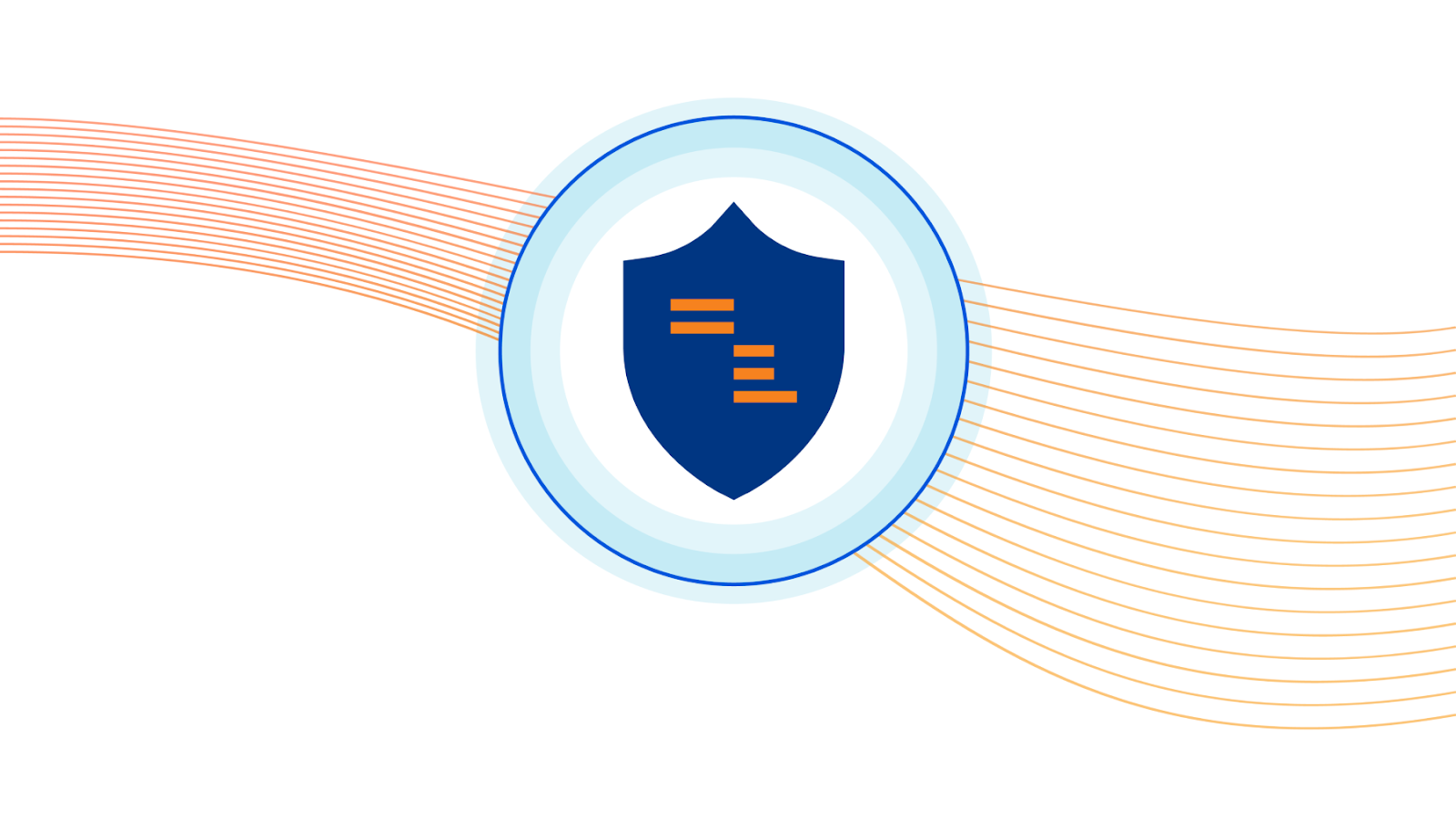

A recent decision from the Austrian Data Protection Authority (the Datenschutzbehörde) has network engineers scratching their heads and EU companies that use Google Analytics scrambling. The Datenschutzbehörde found that an Austrian website’s use of Google Analytics violates the EU General Data Protection Regulation (GDPR) as interpreted by the “Schrems II” case because Google Analytics can involve sending full or truncated IP addresses to the United States.
While disabling such trackers might be one (extreme) solution, doing so would leave website operators blind to how users are engaging with their site. A better approach: find a way to use tools like Google Analytics, but do so with an approach that protects the privacy of personal information and keeps it in the EU, avoiding a data transfer altogether. Enter Cloudflare Zaraz.
But before we get into just how Cloudflare Zaraz can help, we need to explain a bit of the background for the Datenschutzbehörde’s ruling, and why it’s a big deal.
What are the privacy and data localization issues?
The GDPR is a comprehensive data privacy law that applies to EU residents’ personal data, regardless of where it is processed. The GDPR itself does not insist that personal data must Continue reading
How to stop running out of ephemeral ports and start to love long-lived connections

Often programmers have assumptions that turn out, to their surprise, to be invalid. From my experience this happens a lot. Every API, technology or system can be abused beyond its limits and break in a miserable way.
It's particularly interesting when basic things used everywhere fail. Recently we've reached such a breaking point in a ubiquitous part of Linux networking: establishing a network connection using the connect() system call.
Since we are not doing anything special, just establishing TCP and UDP connections, how could anything go wrong? Here's one example: we noticed alerts from a misbehaving server, logged in to check it out and saw:
marek@:~# ssh 127.0.0.1
ssh: connect to host 127.0.0.1 port 22: Cannot assign requested address
You can imagine the face of my colleague who saw that. SSH to localhost refuses to work, while she was already using SSH to connect to that server! On another occasion:
marek@:~# dig cloudflare.com @1.1.1.1
dig: isc_socket_bind: address in use
This time a basic DNS query failed with a weird networking error. Failing DNS is a bad sign!
In both cases the problem was Linux running out of ephemeral ports. When Continue reading
Announcing the public launch of Cloudflare’s bug bounty program


Today we are launching Cloudflare’s paid public bug bounty program. We believe bug bounties are a vital part of every security team’s toolbox and have been working hard on improving and expanding our private bug bounty program over the last few years. The first iteration of our bug bounty was a pure vulnerability disclosure program without cash bounties. In 2018, we added a private bounty program and are now taking the next step to a public program.
Starting today, anyone can report vulnerabilities related to any Cloudflare product to our public bug bounty program, hosted on HackerOne’s platform.
Let's walk through our journey so far.

Step 1: starting a vulnerability disclosure program
In 2014, when the company had fewer than 100 employees, we created a responsible disclosure policy to provide a safe place for security researchers to submit potential vulnerabilities to our security team, with some established rules of engagement. A vulnerability disclosure policy is an important first step for a company to take because it is an invitation to researchers to look at company assets without fear of repercussions, provided the researchers follow certain guidelines intended to protect everyone involved. We still stand by that policy and welcome Continue reading
Cloudflare Partner Program Now Supports SASE & Zero Trust Managed Services

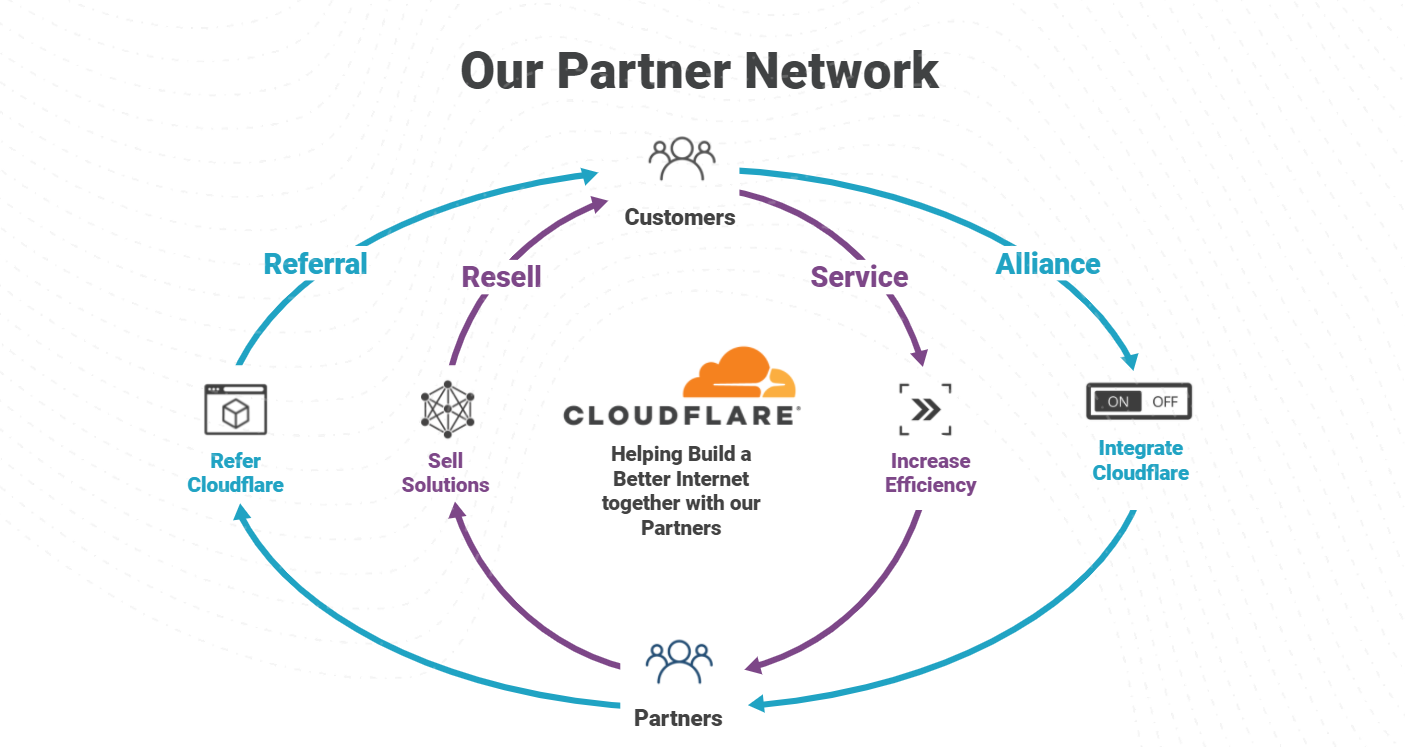
The importance of the Cloudflare Partner Network was on full display in 2021, with record level partner growth in 2021 and aiming even higher in 2022. We’ve been listening to our partners and working to constantly strengthen our ability to deliver value for businesses of all types. An area we identified we could do better, is a program to support “service partners” that want to wrap managed and professional services around Cloudflare products. Today, we are excited to announce the next evolution of the Cloudflare Channel and Alliances Partner Program to specifically enable partners that provide services around Cloudflare products with recurring revenue streams as they equip businesses of all sizes and types with Cloudflare’s leading Zero Trust and SASE solutions.

Core to enabling Services Partners are some exciting enhancements:
- New Program Paths
- New Managed Services Partner (MSP) Accreditation.
- New Support & Go-To-Market Motions
New Program Paths
We have seen a 29% increase in ransom DDoS attacks over the past year and a 175% increase just last quarter. Partners continue to be on the front lines helping mitigate and prevent disruption from these events as they extend our services. Our goal for 2022 is to arm our partners with the Continue reading
Happy Data Privacy Day!


Happy Data Privacy Day 2022! Of course, every day is privacy day at Cloudflare, but today gives us a great excuse to talk about one of our favorite topics.
In honor of Privacy Day, we’re highlighting some key topics in data privacy and data protection that helped shape the landscape in 2021, as well as the issues we’ll be thinking about in 2022. The first category that gets our attention is the intersection of data security and data privacy. At Cloudflare, we’ve invested in privacy-focused technologies and security measures that enhance data privacy to help build the third phase of the Internet, the Privacy phase, and we expect to double down on these developments in 2022.
The second category is data localization. While we don’t think you need localization to achieve privacy, the two are inextricably linked in the EU regulatory landscape and elsewhere.
Third, recent regulatory enforcement actions in the EU against websites’ use of cookies have us thinking about how we can help websites run third-party tools, such as analytics, in a faster, more secure, and more privacy-protective way.
Lastly, we’ll continue to focus on the introduction of new or updated data protection regulations around the world, Continue reading
Protecting Holocaust educational websites


Today is the International Holocaust Remembrance Day. On this day, we commemorate the victims that were murdered by the Nazis and their accomplices.
During the Holocaust, and in the events that led to it, the Nazis exterminated one third of the European Jewish population. Six million Jews, along with countless other members of minority and disability groups, were murdered because the Nazis believed they were inferior.
Cloudflare’s Project Galileo provides free protection to at-risk groups across the world including Holocaust educational and remembrance websites. During the past year alone, Cloudflare mitigated over a quarter of a million cyber threats launched against Holocaust-related websites.
Antisemitism and the Final Solution
In the Second World War and the years leading up to it, antisemitism served as the foundation of racist laws and fueled violent Pogroms against Jews. The tipping point was a night of violence known as the Kristallnacht ("Night of Broken Glass"). Jews and other minority groups were outlawed, dehumanized, persecuted and killed. Jewish businesses were boycotted, Jewish books burned and synagogues destroyed. Jews, Roma and other “enemies of the Reich'' were forced into closed ghettos and concentration camps. Finally, as part of the Final Solution for the Jewish Question, Continue reading
Migrating to Cloudflare Email Routing

A few days ago Google announced that the users from the "G Suite legacy free edition" would need to switch to the paid edition before May 1, 2022, to maintain their services and accounts working. Because of this, many people are now considering alternatives.
One use case for G Suite legacy was handling email for custom domains.
In September, during Birthday Week, we announced Cloudflare Email Routing. This service allows you to create any number of custom email addresses you want on top of the domains you already have with Cloudflare and automatically forward the incoming traffic to any destination inboxes you wish.
Email Routing was designed to be privacy-first, secure, powerful, and very simple to use. Also, importantly, it’s available to all our customers for free.
The closed beta allowed us to keep improving the service and make it even more robust, compliant with all the technical nuances of email, and scalable. Today we're pleased to report that we have over two hundred thousand zones testing Email Routing in production, and we started the countdown to open beta and global availability.
With Email Routing, you can effectively start receiving Emails in any of your domains for any number of Continue reading
Incorrect proxying of 24 hostnames on January 24, 2022

On January 24, 2022, as a result of an internal Cloudflare product migration, 24 hostnames (including www.cloudflare.com) that were actively proxied through the Cloudflare global network were mistakenly redirected to the wrong origin. During this incident, traffic destined for these hostnames was passed through to the clickfunnels.com origin and may have resulted in a clickfunnels.com page being displayed instead of the intended website. This was our doing and clickfunnels.com was unaware of our error until traffic started to reach their origin.
API calls or other expected responses to and from these hostnames may not have responded properly, or may have failed completely. For example, if you were making an API call to api.example.com, and api.example.com was an impacted hostname, you likely would not have received the response you would have expected.
Here is what happened:
At 2022-01-24 22:24 UTC we started a migration of hundreds of thousands of custom hostnames to the Cloudflare for SaaS product. Cloudflare for SaaS allows SaaS providers to manage their customers’ websites and SSL certificates at scale - more information is available here. This migration was intended to be completely seamless, with the outcome being enhanced Continue reading
Landscape of API Traffic


In recent years we have witnessed an explosion of Internet-connected applications. Whether it is a new mobile app to find your soulmate, the latest wearable to monitor your vitals, or an industrial solution to detect corrosion, our life is becoming packed with connected systems.
How is the Internet changing because of this shift? This blog provides an overview of how Internet traffic is evolving as Application Programming Interfaces (APIs) have taken the centre stage among the communication technologies. With help from the Cloudflare Radar team, we have harnessed the data from our global network to provide this snapshot of global APIs in 2021.
The huge growth in API traffic comes at a time when Cloudflare has been introducing new technologies that protect applications from nascent threats and vulnerabilities. The release of API Shield with API Discovery, Schema Validation, mTLS and API Abuse Detection has provided customers with a set of tools designed to protect their applications and data based on how APIs work and their challenges.
We are also witnessing increased adoption of new protocols. Among encryption protocols, for example, TLS v1.3 has become the most used protocol for APIs on Cloudflare while, for transport protocols, we Continue reading
Burkina Faso experiencing second major Internet disruption this year
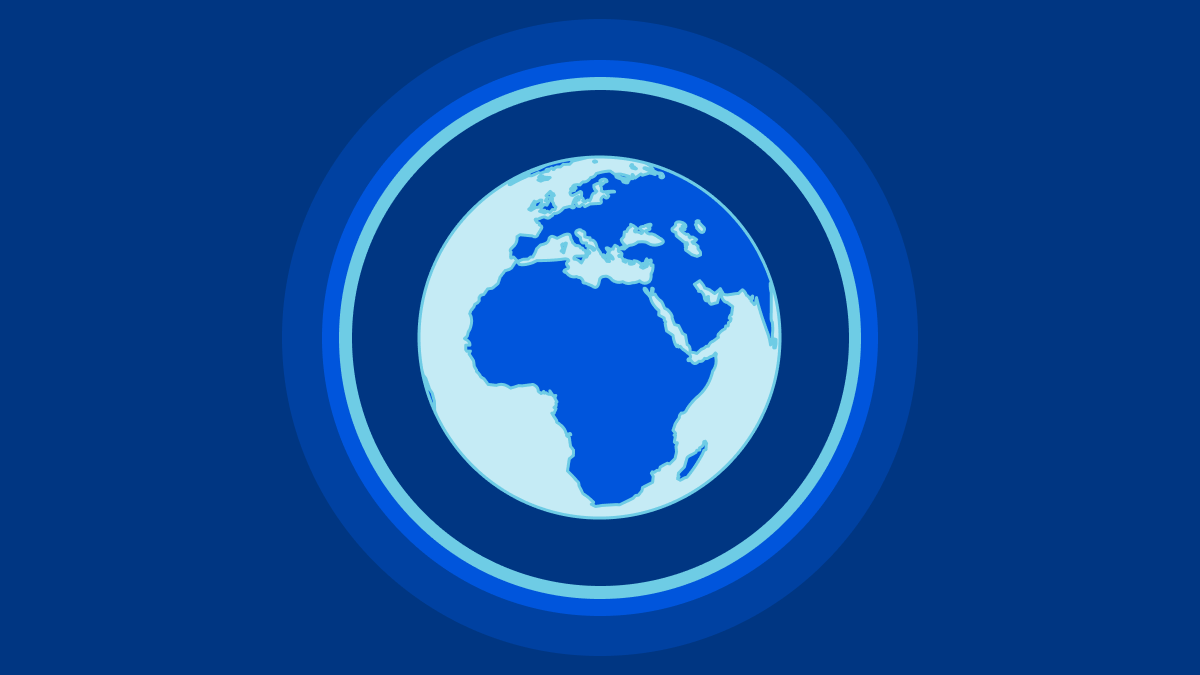
The early hours of Sunday, January 23, 2022, started in Burkina Faso with an Internet outage or shutdown. Heavy gunfire in an army mutiny could be related to the outage according to the New York Times (“mobile Internet services were shut down”). As of today, there are three countries affected by major Internet disruptions — Tonga and Yemen are the others.
Cloudflare Radar shows that Internet traffic dropped significantly in the West African country after ~09:15 UTC (the same in local time) and remains low more than 24 hours later. Burkina Faso also had a mobile Internet shutdown on January 10, 2022, and another we reported in late November 2021.


The main ISPs from Burkina Faso were affected. The two leading Internet Service Providers Orange and FasoNet lost Internet traffic after 09:15 UTC, but also Telecel Faso, as the next chart shows. This morning, at around 10:00 UTC there was some traffic from FasoNet but less than half of what we saw at the same time in preceding days.

It’s not only mobile traffic that is affected. Desktop traffic is also impacted. In Burkina Faso, our data shows that mobile devices normally represent 70% of Internet traffic.
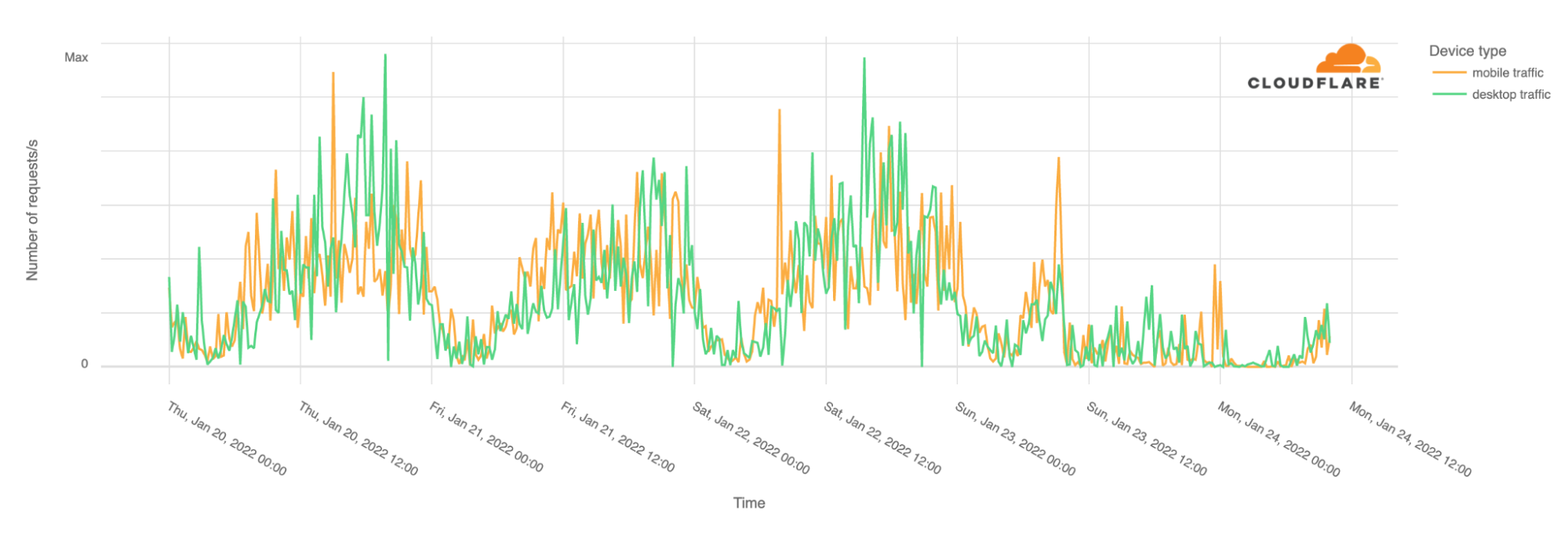
With the Burkina Continue reading
Internet outage in Yemen amid airstrikes

The early hours of Friday, January 21, 2022, started in Yemen with a country-wide Internet outage. According to local and global news reports airstrikes are happening in the country and the outage is likely related, as there are reports that a telecommunications building in Al-Hudaydah where the FALCON undersea cable lands was hit.
Cloudflare Radar shows that Internet traffic dropped close to zero between 21:30 UTC (January 20, 2022) and by 22:00 UTC (01:00 in local time).
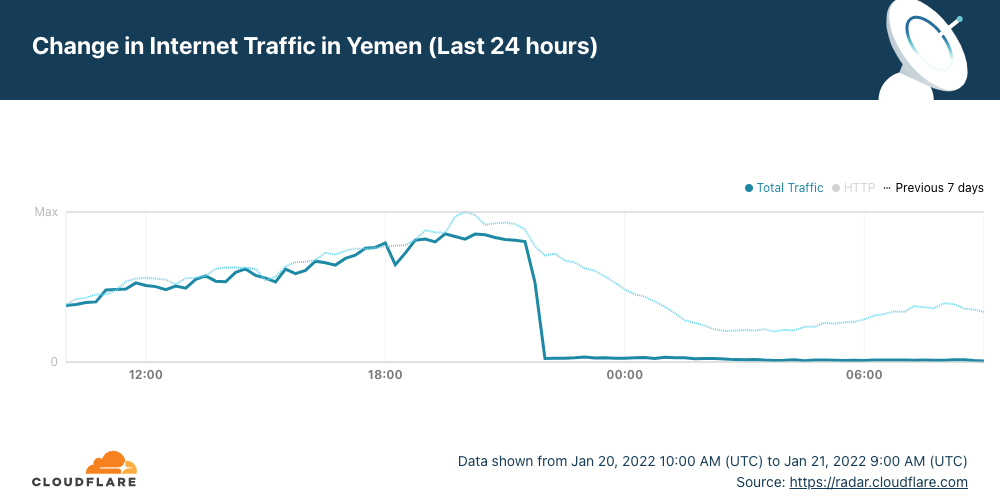
The outage affected the main state-owned ISP, Public Telecommunication Corporation (AS30873 in blue in the next chart), which represents almost all the Internet traffic in the country.

Looking at BGP (Border Gateway Protocol) updates from Yemen’s ASNs around the time of the outage, we see a clear spike at the same time the main ASN was affected ~21:55 UTC, January 20, 2022. These update messages are BGP signalling that Yemen’s main ASN was no longer routable, something similar to what we saw happening in The Gambia and Kazakhstan but for very different reasons.
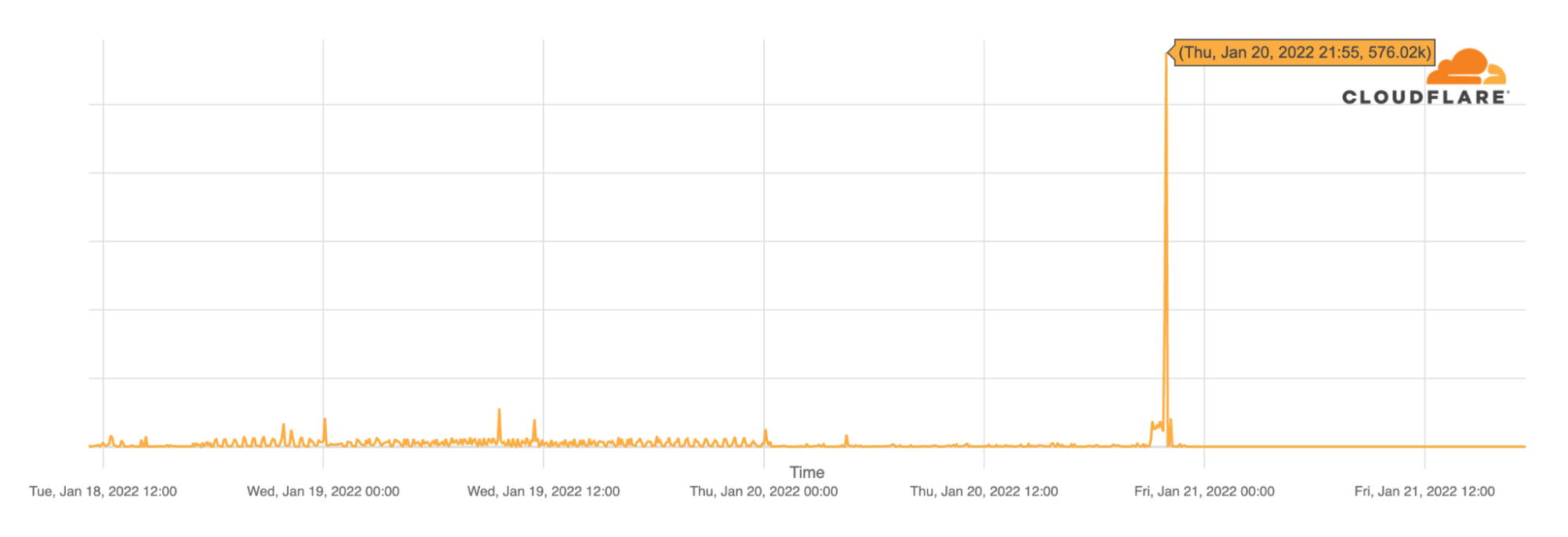
So far, 2022 has started with a few significant Internet disruptions for different reasons:
1. An Internet outage in The Gambia because of a cable problem.
2. An Internet Continue reading
Tonga’s likely lengthy Internet outage
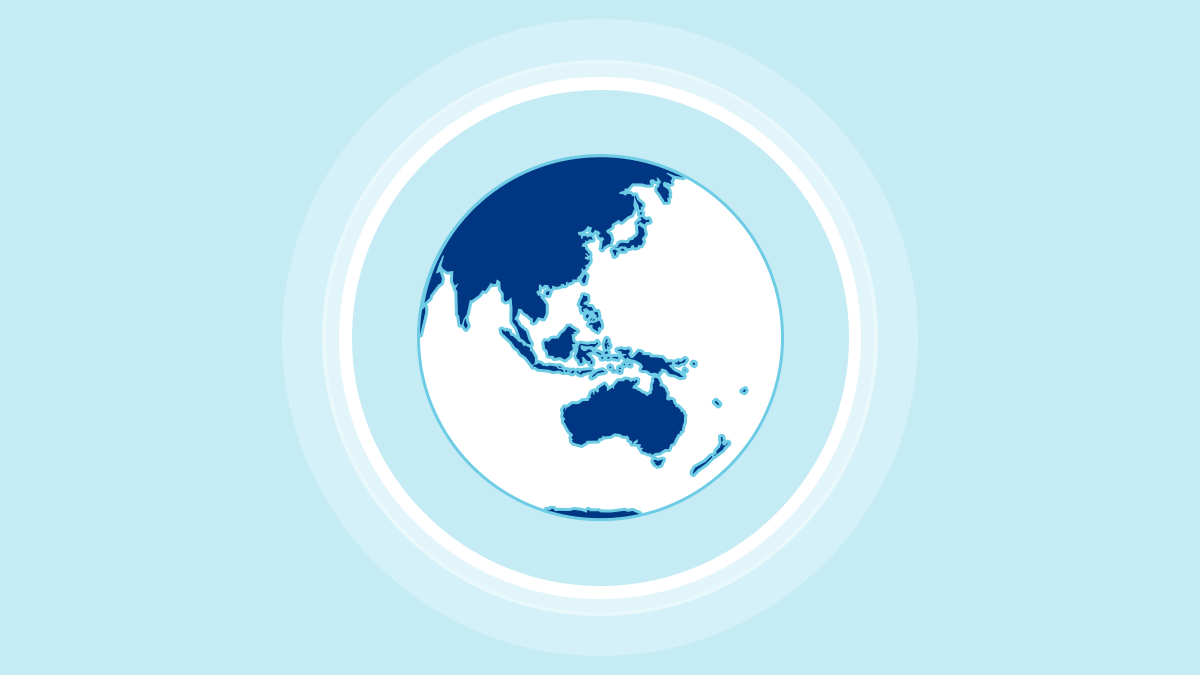
2022 only has 19 days of existence but so far this January, there have already been four significant Internet disruptions:
1. An Internet outage in The Gambia because of a cable problem.
2. An Internet shutdown in Kazakhstan because of unrest.
3. A mobile Internet shutdown in Burkina Faso because of a coup plot.
4. An Internet outage in Tonga because of a volcanic eruption.
The latest Internet outage, in the South Pacific country of Tonga (with 169 islands), is still ongoing. It started with the large eruption of Hunga Tonga–Hunga Haʻapai, an uninhabited volcanic island of the Tongan archipelago on Friday, January 14, 2022. The next day, Cloudflare Radar shows that the Internet outage started at around 03:00 UTC (16:00 local time) — Saturday, January 15, 2022 — and is ongoing for more than four days. Tonga’s 105,000 residents are almost entirely unreachable, according to the BBC.

When we focus on the number of requests by ASN, the country’s main ISPs Digicel and Kalianet started to lose traffic after 03:00 UTC and by 05:30 UTC January 15, 2022, Cloudflare saw close to no traffic at all from them, as shown in the graph below.

Looking at the BGP Continue reading
Tomonari Sato: Why I joined Cloudflare and why I’m helping Cloudflare grow in Japan
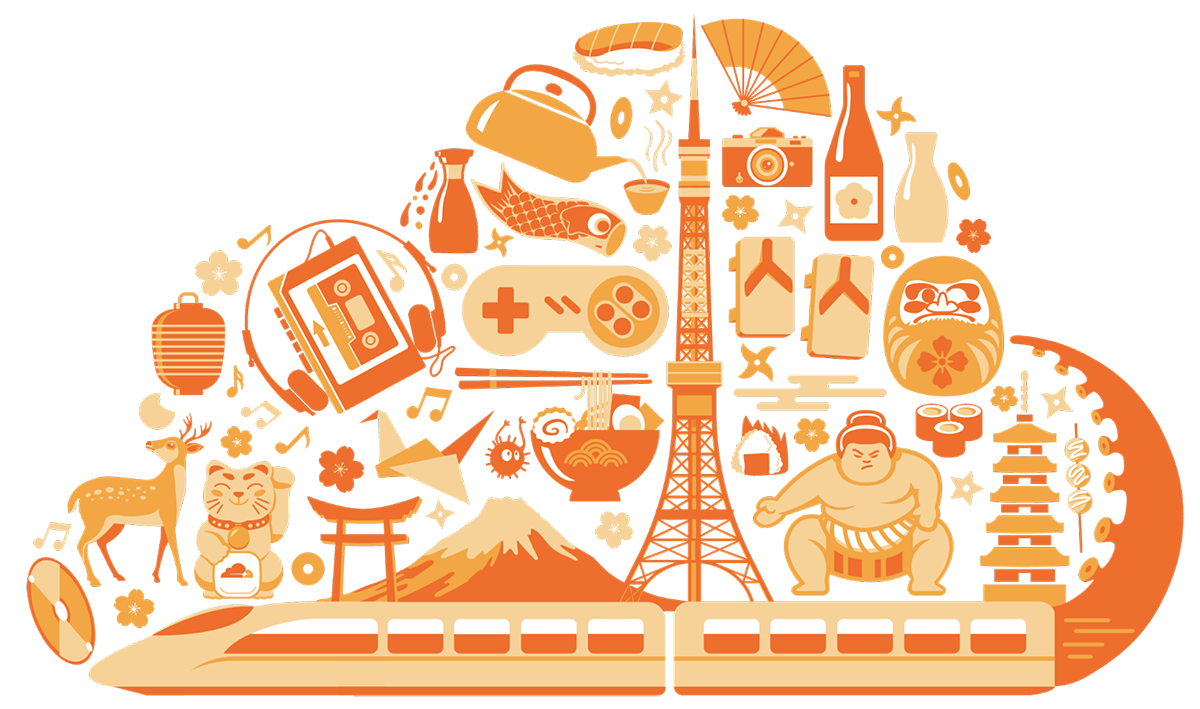
This post is also available in 日本語.

I’m excited to announce that I recently joined Cloudflare in Japan as Vice-President and Managing Director, to help build and expand our customer, partner base, and presence in Japan. Cloudflare expanded its network in Japan in 2010, just months after launching. Now, 12 years later, Cloudflare is continuing its mission to help build a better Internet in Japan and across the globe, and I’m looking forward to being able to contribute to that mission!

A little about me
In my 35-year career in the IT industry, I have been fortunate enough to work with some of the biggest technology companies in the world, working in various roles in both sales and technical sides of the business. I consider this one of my biggest strengths. In addition, working in the IT industry has allowed me to acquire industry knowledge across a number of different solutions such as custom development, packaged systems (ERP, CRM), MS Office products, and cloud solutions.
Most recently, I was director of the Enterprise Business Group for Japan at AWS, where I was responsible for all commercial industries such as Manufacturing, Process, Distribution, Retail, Telecommunications, Utility, Media, Service, Pharmaceuticals, among others. Continue reading
Cloudflare customers on Free plans can now also get real-time DDoS alerts


We’re excited to announce that customers using our Free plan can now get real-time alerts about HTTP DDoS attacks that were automatically detected and mitigated by Cloudflare. The real-time DDoS alerts were originally announced over a year ago but were made available to customers on the Pro plan or higher. This announcement extends the DDoS alerts feature to Free plan users. You can read the original announcement blog post here.
What is a DDoS attack?
A Distributed Denial of Service (DDoS) attack is a cyber-attack that attempts to disrupt your online business. Whether your business relies on VoIP servers, UDP-based gaming servers, or HTTP servers, DDoS attacks can be used to disrupt any type of Internet property, server, or network.
In this blog post, we’ll focus on DDoS attacks that target HTTP servers. Whether your HTTP server is powering a mobile app, an eCommerce website, an API gateway, or any other HTTP application, if an attacker sends you more requests than it can handle, your server won't be able to serve your real users. A flood of requests can cause service disruptions or even take your entire server offline. DDoS attacks can have real-world consequences such as a blow to Continue reading
A Workers optimization that reduces your bill


Recently, we made an optimization to the Cloudflare Workers runtime which reduces the amount of time Workers need to spend in memory. We're passing the savings on to you for all your Unbound Workers.
Background
Workers are often used to implement HTTP proxies, where JavaScript is used to rewrite an HTTP request before sending it on to an origin server, and then to rewrite the response before sending it back to the client. You can implement any kind of rewrite in a Worker, including both rewriting headers and bodies.
Many Workers, though, do not actually modify the response body, but instead simply allow the bytes to pass through from the origin to the client. In this case, the Worker's application code has finished executing as soon as the response headers are sent, before the body bytes have passed through. Historically, the Worker was nevertheless considered to be "in use" until the response body had fully finished streaming.
For billing purposes, under the Workers Unbound pricing model, we charge duration-memory (gigabyte-seconds) for the time in which the Worker is in use.
The change
On December 15-16, we made a change to the way we handle requests that are streaming through the Continue reading
Former R&D Engineer Wins Round 2 of Project Jengo, and Cloudflare Wins at the Patent Office


The classic children’s fairy tale The Three Billy Goats Gruff tells the story of three goats trying to cross a bridge to a field of yummy grass, despite the monstrous troll that lives underneath the bridge and threatens to eat them. To beat the troll, the goats played on his greed and proceeded across the bridge in order from smallest to largest – and holding the troll at bay each time with promises of a larger meal if he waited for the larger goat to follow. In the end, the troll passed on attacking the smaller goats and was left to do battle with the largest goat who was able to defeat the troll, toss him off the bridge, and watch him float downstream. The goats were then able to enjoy the yummy grass, troll-free. In our fight against Sable Networks (patent troll), we plan on being that third goat, and our recent wins suggest we might be on track to do just that.
$10,000 to our second round of Project Jengo winner!
We started Project Jengo 2 last year as a prior art search contest, so we could enlist your help in the battle against Sable Networks. We committed Continue reading
DDoS Attack Trends for Q4 2021

This post is also available in 日本語, Deutsch, Français, Español.

The first half of 2021 witnessed massive ransomware and ransom DDoS attack campaigns that interrupted aspects of critical infrastructure around the world (including one of the largest petroleum pipeline system operators in the US) and a vulnerability in IT management software that targeted schools, public sector, travel organizations, and credit unions, to name a few.
The second half of the year recorded a growing swarm of one of the most powerful botnets deployed (Meris) and record-breaking HTTP DDoS attacks and network-layer attacks observed over the Cloudflare network. This besides the Log4j2 vulnerability (CVE-2021-44228) discovered in December that allows an attacker to execute code on a remote server — arguably one of the most severe vulnerabilities on the Internet since both Heartbleed and Shellshock.
Prominent attacks such as the ones listed above are but a few examples that demonstrate a trend of intensifying cyber-insecurity that affected everyone, from tech firms and government organizations to wineries and meat processing plants.
Here are some DDoS attack trends and highlights from 2021 and Q4 ‘21 specifically:
Ransom DDoS attacks
- In Q4, ransom DDoS attacks increased by 29% YoY and Continue reading
Cloudflare Innovation Weeks 2021


One of the things that makes Cloudflare unique is our Innovation Weeks. Rather than having one large conference annually, we have multiple Innovation Weeks throughout the year to highlight new product announcements, beta products opening up to general availability, and share how our customers are using Cloudflare to help build a better Internet.
Internally, these weeks generate a lot of energy and excitement as well, as they provide an opportunity for teams from across Cloudflare to work together on product delivery and celebrate company-wide successes. In 2021, we had seven Cloudflare Innovation Weeks. As we start planning our 2022 Innovation Weeks, we are reflecting back on the highlights from each of these weeks.

Security Week March 21-26, 2021
Patrick Donahue
Security Week kicked off Cloudflare’s 2021 Innovation Weeks with a series of foundational security announcements. The Internet wasn’t built with security in mind, but the products and partnerships announced this week continued Cloudflare’s core mission of helping build a better Internet—one that companies of all sizes can plug into and be protected by default from the types of attacks that have historically resulted in loss of data, computing resources, and customer confidence.
At the start of the week, we took Continue reading
Miniflare 2.0: fully-local development and testing for Workers


In July 2021, I launched Miniflare 1.0, a fun, full-featured, fully-local simulator for Workers, on the Cloudflare Workers Discord server. What began as a pull request to the cloudflare-worker-local project has now become an official Cloudflare project and a core part of the Workers ecosystem, being integrated into wrangler 2.0. Today, I'm thrilled to announce the release of the next major version: a more modular, lightweight, and accurate Miniflare 2.0. 🔥
Background: Why Miniflare was created

At the end of 2020, I started to build my first Workers app. Initially I used the then recently released wrangler dev, but found it was taking a few seconds before changes were reflected. While this was still impressive considering it was running on the Workers runtime, I was using Vite to develop the frontend, so I knew a significantly faster developer experience was possible.
I then found cloudflare-worker-local and cloudworker, which were local Workers simulators, but didn’t have support for newer features like Workers Sites. I wanted a magical simulator that would just work ✨ in existing projects, focusing on the developer experience, and — by the reception of Miniflare 1.0 — I wasn't the only one.